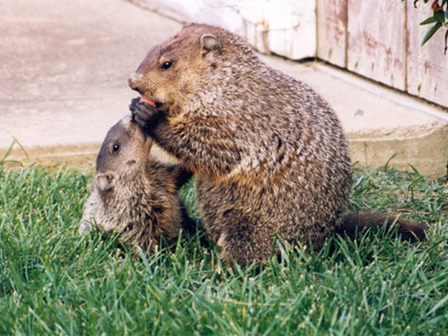Corporate Office:
20 Corporate Park Drive, Suite 150
Pembroke MA 02359
Cambridge, MA Office:
2534 Massachusetts Ave,
Cambridge, MA 02140
They are cute & unassuming mammal that we typically find amusing until they are on our property. They can cause severe damage to landscapes and their extensive burrows can undermine foundations, slab, and other structures. Burrows can also flood out during heavy rains or snow melts. They can be quite aggressive when confronted or are protecting their young.
Groundhog, Woodchuck, and Land Beaver are some of their names. They are a member of the rodent family (sciurid). The groundhog is the largest sciurid in its geographical range, typically measuring 16-26” long (including a 6” tail) and weighs approximately 4-9LBS.

In areas with fewer natural predators and ample food supply, groundhogs can grow to 30” long and 31LBS. Groundhogs are well adapted for digging and burrowing due to their short but powerful limbs and curved, thick claws. Groundhogs are covered with two coats of fur: a dense grey undercoat and ba longer coat of banded guard hairs that gives the groundhog it’s distinctive "frosted" appearance.
Groundhogs usually live from two to three years, but can live up to six years in the wild. In captivity, groundhogs can greatly exceed this limit.
Mostly herbivorous, groundhogs primarily eat wild grasses and other vegetation, and berries and agricultural crops when available. Groundhogs also eat grubs, grasshoppers, insects, snails and other small animals, but are not as omnivorous as many other rodents. One litter is produced annually, usually containing 2–6 offspring.
Groundhogs are excellent burrowers, using burrows for sleeping, rearing young, and hibernating. The average groundhog has been estimated to move approximately 35 cubic feet or 710 lb of dirt when digging a burrow. Groundhog burrows usually have two to five entrances, providing groundhogs their primary means of escape from predators. Burrows are often very large, with up to 46ft of tunnels buried up to 5ft underground.
Have a pest that you Can Not identify?
We are here to help! Send us a photo at Secured Environments Pest ID or Contact Us!